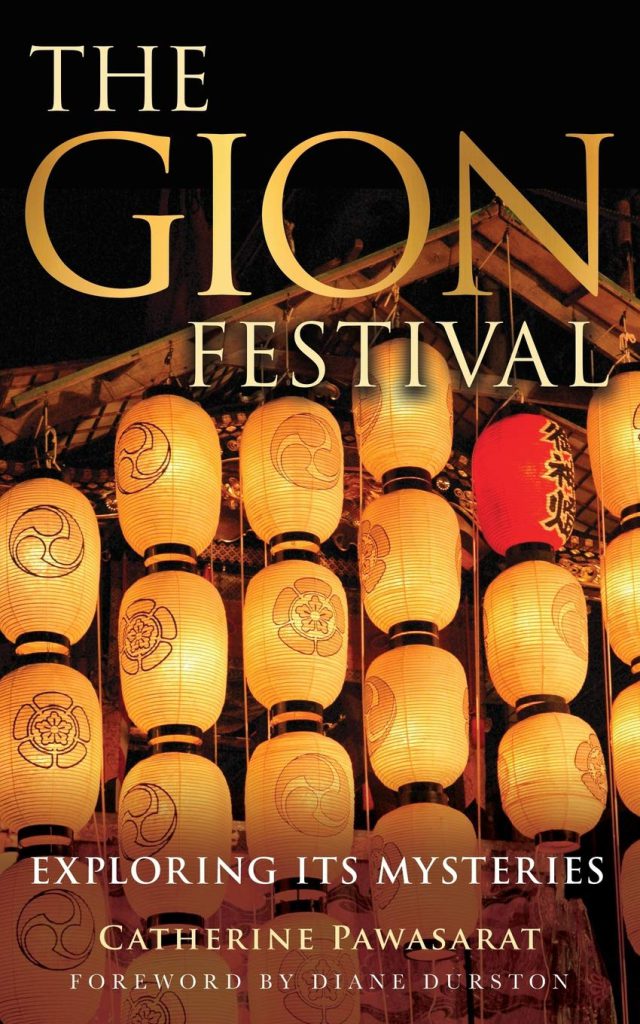The Gion Festival, an integral part of Kyoto’s cultural heritage, spans the month of July, culminating in vibrant processions on July 17th and 24th. Catherine Pawasarat’s book, The Gion Festival: Exploring its Mysteries (2022) provides a comprehensive guide to this historic event, suitable for both newcomers and seasoned festival-goers.
Pawasarat’s book offers an insider’s perspective, drawing on her many years living in the Old Capital, coupled with an understanding of Japanese culture. The narrative unfolds the multifaceted layers of Gion Matsuri, providing a useful companion for those exploring Kyoto in July. Below are key points that explain why this book is not simply a guidebook, but also a means of digging deeper into the culture.
- Organized Guidebook: Pawasarat’s book stands out by featuring color-coded sections that facilitate quick information retrieval. The compact size makes it ideal for travelers, with a Kindle version offering much larger photos and maps.
- Float Insights: The author dedicates two sections to the July 17th and 24th processions, providing succinct background stories on each float and highlighting their significant treasures. The abundance of information is handled in a way which ensures that readers gain key insights without feeling overwhelmed
- Practical Information: A valuable section offering a full calendar of events aids visitors in planning their Gion Matsuri experience, with detailed maps showcasing float locations and parade courses. The inclusion of useful tips, particularly on coping with the scorching July heat, demonstrates the author’s consideration for readers’ well-being.
- Diverse Festival Activities: The book includes various aspects of the festival beyond the processions, in sections like “Art Treasures” and “Explorations.” Readers are taken through musical performances, dance performances, and even opportunities for active participation, such as pulling a float.
- Historical- Religious Context: Delving into the festival’s history, the author unveils the intertwining of Buddhism and Shinto, offering a glimpse into Japanese religion. The author skilfully navigates a third religious element in the festival, for several floats are dedicated to the folk religion of Shugendo (combining elements of Shinto, Buddhism, and Taoism). The colorful devotees of Shugendo perform sacred rituals especially at the En no Gyoja float (supposed founder of the sect). The various events and floats reflect the deep syncretism of Japanese religions.
- Modern Purification Ritual: The book encourages readers to view the festival as a modern purification ritual, connecting with its historical roots in protecting Kyoto’s citizens from plagues. Pawasarat invites readers to make a deep engagement with the festival’s sacrifices, portraying them as an ascetic practice that fosters communal cohesion and self-transformation.
- Community Commitment: Drawing on her experience with a neighborhood maintaining a float, the author provides insight into the commitment and dedication required for the festival’s success. She highlights the necessity of communication among participants, emphasizing the ritual’s generational significance and its ability to slow life down to the pace of face-to-face community interaction.
In short, Catherine Pawasarat’s The Gion Festival: Exploring its Mysteries transcends the usual role of a guidebook, offering readers a profound connection to the festival’s rich history, intricate rituals, and the dedicated community behind its continuity. Whether a first-time visitor or a seasoned participant, readers will find that this book serves as an invaluable companion, unlocking the many layers of the Gion Festival in a captivating and accessible manner.

